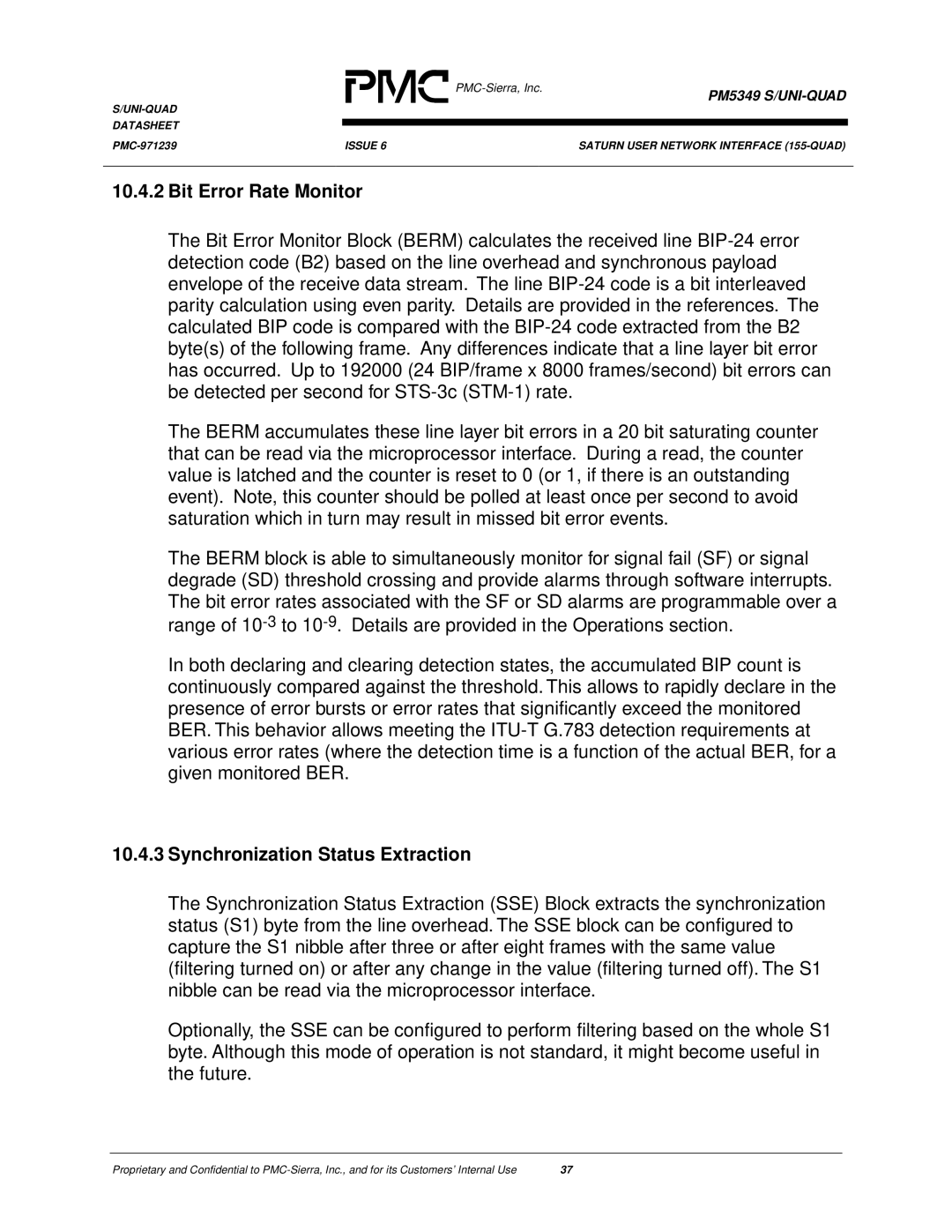
DATASHEET
PM5349 S/UNI-QUAD
ISSUE 6 | SATURN USER NETWORK INTERFACE | |
|
|
|
10.4.2Bit Error Rate Monitor
The Bit Error Monitor Block (BERM) calculates the received line
The BERM accumulates these line layer bit errors in a 20 bit saturating counter that can be read via the microprocessor interface. During a read, the counter value is latched and the counter is reset to 0 (or 1, if there is an outstanding event). Note, this counter should be polled at least once per second to avoid saturation which in turn may result in missed bit error events.
The BERM block is able to simultaneously monitor for signal fail (SF) or signal degrade (SD) threshold crossing and provide alarms through software interrupts. The bit error rates associated with the SF or SD alarms are programmable over a range of
In both declaring and clearing detection states, the accumulated BIP count is continuously compared against the threshold. This allows to rapidly declare in the presence of error bursts or error rates that significantly exceed the monitored BER. This behavior allows meeting the
10.4.3Synchronization Status Extraction
The Synchronization Status Extraction (SSE) Block extracts the synchronization status (S1) byte from the line overhead. The SSE block can be configured to capture the S1 nibble after three or after eight frames with the same value (filtering turned on) or after any change in the value (filtering turned off). The S1 nibble can be read via the microprocessor interface.
Optionally, the SSE can be configured to perform filtering based on the whole S1 byte. Although this mode of operation is not standard, it might become useful in the future.
Proprietary and Confidential to | 37 |
